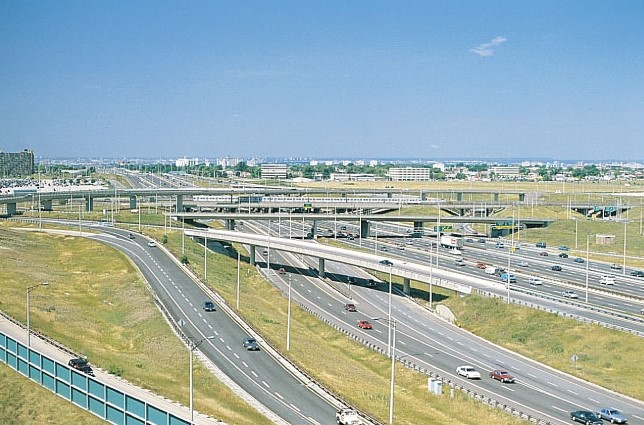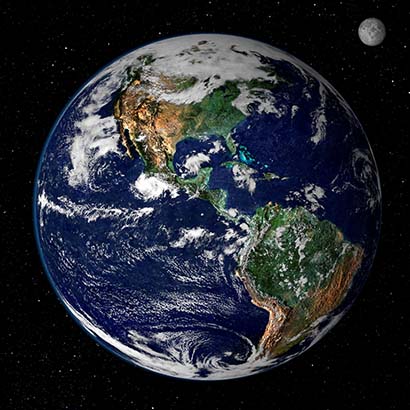Chapter 7 Resources and the Environment Reading Guide Answers
Chapter 1 ~ Ecosystems and Humans
- Define environmental science and distinguish it from related fields such as environmental studies, ecology, and geography.
- Explain the complexity of the universe through a hierarchical framework that includes consideration of Earth, life, and ecosystems at various scales.
- Identify key principles of the ecosystem approach to conserving natural resources.
- Describe how environmental stressors and disturbances can affect species and ecosystems.
- Explain the history of human cultural evolution in terms of an increasing ability to cope with environmental constraints on the availability of natural resources and other aspects of economic development.
- List at least three ways in which humans directly influence environmental conditions.
- Identify four broad classes of environmental values.
- Describe five important world views.
- Understand the diverse issues of the environmental crisis by classifying them into three categories, and give several examples within each of them.
- Discuss the environmental effects of humans as a function of two major influences: increases of population and intensification of lifestyle (per-capita effects).
- explain the differences between economic growth and ecologically sustainable development.
Environmental Science and Its Context
- the causes and consequences of the rapidly increasing human population
- the use and depletion of natural resources
- damage caused by pollution and disturbances, including the endangerment of biodiversity
- How large is the human population likely to be in Canada, or on Earth, in 50 or 200 years?
- How can the use of fossil fuels be integrated into a sustainable economy, in view of the fact that they are non-renewable resources that do not regenerate?
- How can we harvest renewable resources (which do have the potential to regenerate) in ways that do not degrade their stocks, such as cod in Atlantic Canada, wild salmon in British Columbia, wheat and other grains in the Prairie provinces, and forest resources across much of the country?
- What ecological damages are caused by various kinds of pollution, such as acid rain, ozone, pesticides, and sulphur dioxide, and how can these effects be prevented or repaired?
- Are human influences affecting global climate, and if so, what are the causes and consequences of this effect?
- Where and how quickly are species and natural habitats becoming endangered or extinct, and how can these calamities be prevented?
- The extraction, processing, and use of non-renewable resources, such as fossil fuels and metals, in ways that do not cause unacceptable environmental damage, while also moderating their depletion to some possible degree (for example, by re-cycling certain materials)
- The harvesting and management of biological resources, such as those in agriculture, fisheries, and forestry, in ways that allow them to fully regenerate so their stocks can be sustained into the future
- The growth of renewable sources of energy, such as the various forms of solar energy (including biomass fuels, hydroelectricity, photovoltaics, and wind), as a way of replacing non-renewable fossil fuels and thereby making the energy economy more sustainable
- The prevention and repair of ecological damages, such as those related to endangered biodiversity, degraded land or water, and the management of greenhouse gases
Earth, Life, and Ecosystems
Figure 1.2. Hierarchical Organization of the Universe.

- individual organisms, which are living entities that are genetically and physically discrete
- populations, or individuals of the same species that occur together in time and space
- communities, or populations of various species, also co-occurring at the same time and place
- landscapes and seascapes (collectively, these are ecoscapes), which are spatial integrations of various communities over large areas
- and the biosphere in its entirety, which is composed of all life and ecosystems on Earth
Species and Ecosystems
Stressors and Responses
- the discovery of ways of making improved weapons for hunting animals
- domestication of the dog, which also greatly facilitated hunting
- domestication of fire, which provided warmth and allowed for cooked, more digestible foods
- ways of cultivating and domesticating plants and livestock, which resulted in huge increases in food availability
- techniques for working raw metals into tools, which were much better than those made of wood, stone, or bone The rate of new discoveries has increased enormously over time. More recent technological revolutions include the following:
- methods of using machines and energy to perform work previously done by humans or draught animals
- further advances in the domestication and cultivation of plants and animals
- discoveries in medicine and sanitation
- extraordinary strides in communications and information-processing technologies
Ethics and World Views
-
Population
In 2015, the human population numbered more than 7.3 billion, including about 34 million in Canada . At the global level, the human population has been increasing because of the excess of birth rates over death rates. The recent explosive population growth, and the poverty of so many people, is a root cause of much of the environmental crisis. Directly or indirectly, large population increases result in extensive deforestation, expanding deserts, land degradation by erosion, shortages of water, change in regional and global climate, endangerment and extinction of species, and other great environmental problems. Considered together, these damages represent changes in the character of the biosphere that are as cataclysmic as major geological events, such as glaciation. We will discuss the human population in more detail in Chapters 10 and 11.
-
Resources
Two kinds of natural resources can be distinguished. A non-renewable resource is present in a finite quantity. As these resources are extracted from the environment, in a process referred to as mining, their stocks are inexorably diminished and so are available in increasingly smaller quantities for future generations. Non-renewable resources include metals and fossil fuels such as petroleum and coal. In contrast, a renewable resource can regenerate after harvesting, and if managed suitably, can provide a supply that is sustainable forever. However, to be renewable, the ability of the resource to regenerate cannot be compromised by excessive harvesting or inappropriate management practices. Examples of renewable resources include fresh water, the biomass of trees and agricultural plants and livestock, and hunted animals such as fish and deer. Ultimately, a sustainable economy must be supported by renewable resources. Too often, however, potentially renewable resources are not used responsibly, which impairs their renewal and represents a type of mining. The subject area of natural resources is examined in detail in Chapters 12, 13, and 14.
-
Environmental Quality
This subject area deals with anthropogenic pollution and disturbances and their effects on people, their economies, other species, and natural ecosystems. Pollution may be caused by gases emitted by power plants and vehicles, pesticides, or heated water discharged into lakes. Examples of disturbance include clear-cutting, fishing, and forest fires. The consequences of pollution and disturbance for biodiversity, climate change, resource availability, risks to human health, and other aspects of environmental quality are examined in Chapters 15 to 26.
- I is the total environmental impact of a human population
- P is the population size
- A is an estimate of the per-capita affluence in terms of resource use
- T is the degree of technological development of the economy, on a per-capita basis
Image 1.4. Places where people live, work, grow food, and harvest natural resources are affected by many kinds of anthropogenic stressors. These result in ecosystems that are not very natural in character, such as the pavement and grassy edges of this major highway in Toronto. Source: B. Freedman.

- increasing efficiency of use of non-renewable resources, for example, by careful recycling of metals and by optimizing the use of energy
- increasing use of renewable sources of energy and materials in the economy (to replace non-renewable sources)
- improving social equity, with the ultimate goal of helping all people (and not just a privileged minority) to have reasonable access to the basic necessities and amenities of life
Questions for Review
- Define environmental science, environmental studies, and ecology. List the key disciplinary fields of knowledge that each includes.
- Describe the hierarchical structure of the universe and list the elements that encompass the realms of biology and ecology.
- Identify the key environmental stressors that may be affecting an ecosystem in your area (e.g., a local park). Make sure that you consider both natural and anthropogenic stressors.
- What is the difference between morals and knowledge, and how are these conditioned by personal and societal values?
- Explain how cultural attributes and expressions can affect the ways that people view the natural world and interact with environmental issues.
Questions for Discussion
- Describe how you are connected with ecosystems, both through the resources that you consume (food, energy, and materials) and through your recreational activities. Which of these connections could you do without?
- How are your personal ethical standards related to utilitarian, ecological, aesthetic, and intrinsic values? Think about your world view and discuss how it relates to the anthropocentric, biocentric, and ecocentric world views.
- According to information presented in this chapter, Canada might be regarded as being as overpopulated as India and China. Do you believe this is a reasonable conclusion? Justify your answer.
- Make a list of the most important cultural influences that have affected your own attitudes about the natural world and environmental issues.
Exploring Issues
- You have been asked by the United Nations to devise an index of national and per-capita environmental impacts that will be used to compare various developed and less-developed countries. Until now, the United Nations has used extremely simple indicators, such as energy use and gross domestic product, but they now want to use more realistic data. How would you design better indicators? What do you think would be the most important components of the indicators, and why?
References Cited and Further Reading
Chapter 7 Resources and the Environment Reading Guide Answers
Source: https://ecampusontario.pressbooks.pub/environmentalscience/chapter/chapter-1/

Belum ada Komentar untuk "Chapter 7 Resources and the Environment Reading Guide Answers"
Posting Komentar